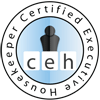Hazardous wastes are unused or left-over contents of consumer products such as pesticides, motor oil, batteries, certain paints, cleaners, stains, and varnishes. These products are hazardous or toxic to humans and may cause damage to the environment if they're thrown out improperly.
- Pouring wastes down the drain, where chemicals may damage septic tanks or contaminate sewer systems;
- Pouring them onto the ground or into storm sewers, where these substances may pollute drinking-water supplies, ponds, streams, rivers, or groundwater; or
- Including them in household trash, where they might injure unwary sanitation workers, and cause environmental damage once disposed of in landfills.
In addition, these products pose a danger to children or pets if stored carelessly around the home.
In many cases, product labeling includes instructions for safe disposal of toxic or hazardous substances.
While U.S. law does not prohibit discarding such wastes as household trash, a number of states and municipalities enforce stricter disposal standards. To reduce the hazard, more than 3,000 communities have sponsored hazardous waste collection days or maintain disposal centers for residents and small businesses in their jurisdictions. Contact your city or town hall, county government, or state solid-waste agency to learn what restrictions apply to homes or small businesses in your area, and whether a local agency regularly collects hazardous waste.
Following is a list of common products that may contain hazardous ingredients:
- Cleaning products — Oven cleaners; drain cleaners; wood and metal cleaners and polishes; toilet cleaners; tub, tile and shower cleaners; chlorine bleach; and pool chemicals.
- Pesticides — Ant sprays, baits; cockroach sprays, baits; flea repellants; bug sprays; plant insecticides; moth repellants; mouse and rat poisons and baits; herbicides; insecticides; fungicides; and wood preservatives.
- Automotive — Used motor oil; fuel additives and boosters; carburetor or fuel-injection cleaners; air-conditioning refrigerant; starter fluid; batteries; transmission fluid; brake fluid; and antifreeze.
- Painting supplies — Adhesives, glues; furniture stripper; oil or enamel paint; stains, finishes; paint thinner, turpentine; paint stripper, remover; photographic chemicals; fixatives; and other solvents.
- Flammables — Propane, other compressed-gas tanks and cylinders; kerosene; heating oil, diesel fuel; gasoline; mixed gasoline and oil; and lighter fluid.
Reference:
U.S. Environmental Protection Agency.









